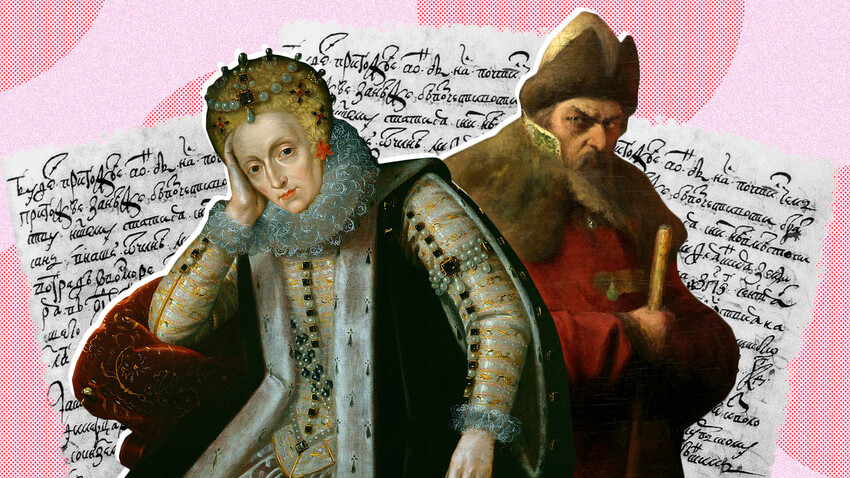
“Because there was no one to be a translator in so great a cause and we gave him an oral secret – business of great value, wanting friendship with you… Submit Anton [ambassador Anthony Jenkinson] we requested because they wanted to ask him, if he gave you the words that we told him, do you agree to our proposal and what are your intentions,” Ivan the Terrible wrote to the English queen Elizabeth I on October 24, 1570.
This letter and the memories of the contemporaries laid the foundation of the story of the unsuccessful union of the two dynasties. What “secret business of great value” was discussed, precisely?
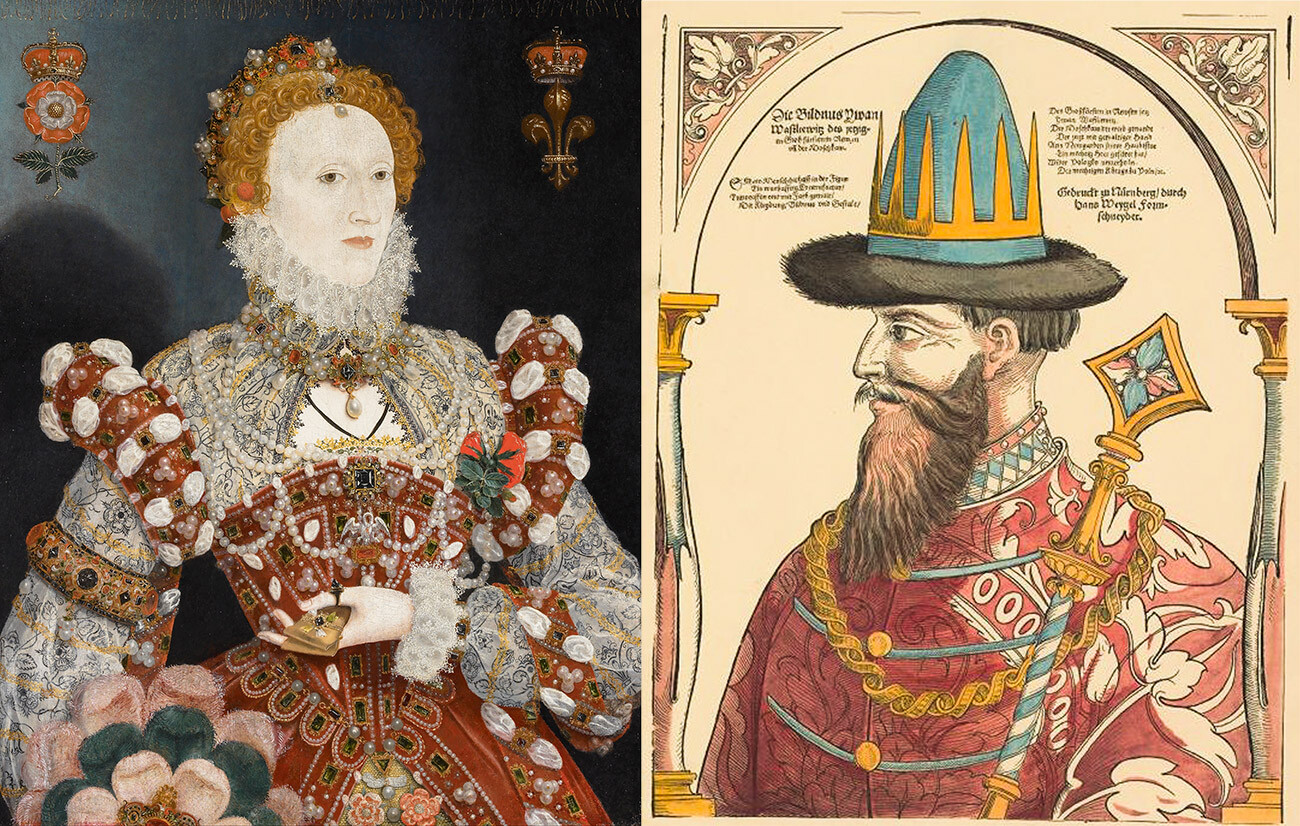
Portrait of Queen Elizabeth I // Ivan IV the Terrible portrait by Weigel, 1882
Nicholas Hilliard/Walker Art Gallery; Hans Weigel der ÄltereAs it is often the case – with commercial matters. In 1551, on the initiative of the famous English astronomer John Dee, the ‘Company of Merchant Adventurers for the Discovery of Regions, Dominions, Islands and Places unknown’ was founded. Its goal was to find the so-called North-eastern passage to China. But, instead, the English merchants had established regular trade connections with the Tsardom of Muscovy. The Englishmen founded the Muscovy Trading Company and began bringing in tin, cloth and weapons. In return, they received hemp, timber, blubber and tar. Ivan the Terrible granted the company the right to conduct free trade on the territory of the country.
READ MORE: How and when did Russians and the English learn of each other?
The trade growth between the countries led to a lively business correspondence between Ivan the Terrible and Elizabeth I. The English queen was the only woman Ivan IV had ever written to. At that, not every topic could be trusted to paper and then the information was passed through a trusted person, English envoy Anthony Jenkinson. In the end, from business negotiations the Russian monarch proceeded to seek the hand of the queen.
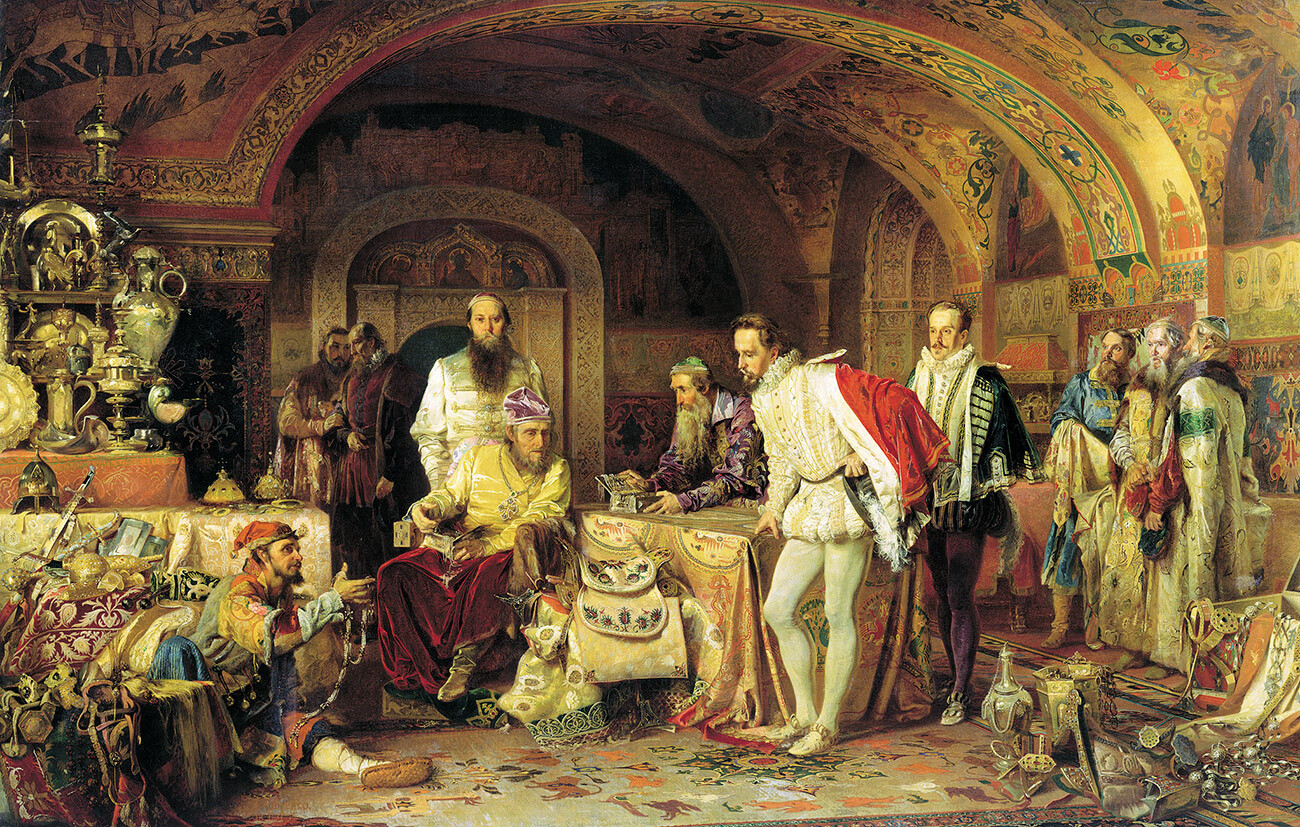
"Ivan the Terrible shows his treasures to the English ambassador Horsey" by Alexander Litovchenko, 1875.
Alexander LitovchenkoBy that moment, in 1570, the 40-year-old Ivan the Terrible had twice been a widower and, in both cases, rumors persisted that his wives died from poisoning. Thirty-seven-year-old Elizabeth I by then had ruled England for 12 years, successfully dodging Parliament demands to choose a spouse and provide the English throne with an heir.
Jerome Horsey, the Muscovy Trading Company representative who left his detailed memories of the Tsardom of Muscovy, states in his notes that Ivan the Terrible questioned his court physician Eliseus Bomelius on how old Queen Elizabeth was and how successful might seeking her hand be. “And though he was much disheartened… that many Kings and great princes that had been suitors to her majesty could not prevail, yet he magnified himself, his person, his wisdom, greatness and riches, above all other princes; he would give it a try.”
Horsey also points out the reason that made Ivan the Terrible look for a bride far away from the Tsardom of Muscovy: such a marriage provided the tsar with an opportunity to seek asylum in England in the case of catastrophic consequences of the Livonian War or internal conspiracies that the tsar feared his entire life. The Pskov Chronicle for the year 1570 confirms Horsey’s information, stating the tsar’s intention to flee to England and marry there.
So, in the October 1570 letter to Elizabeth, among usual trade matters, the tsar, on several occasions, mentioned some “secret business of great value” that Ivan the Terrible related to the Queen through her envoy, Anthony Jenkinson. Historians believe that it was about the matter of a marriage proposal that had been refused. Ivan the Terrible, true to himself, reacted to it harshly. At the end of his reply, he remarked contemptuously that Elizabeth lived not like a real queen, but like a “common girl”, hinting at her inability to be a ruler in her own country, instead redirecting the power to other people. Their correspondence stopped for a long 12 years.
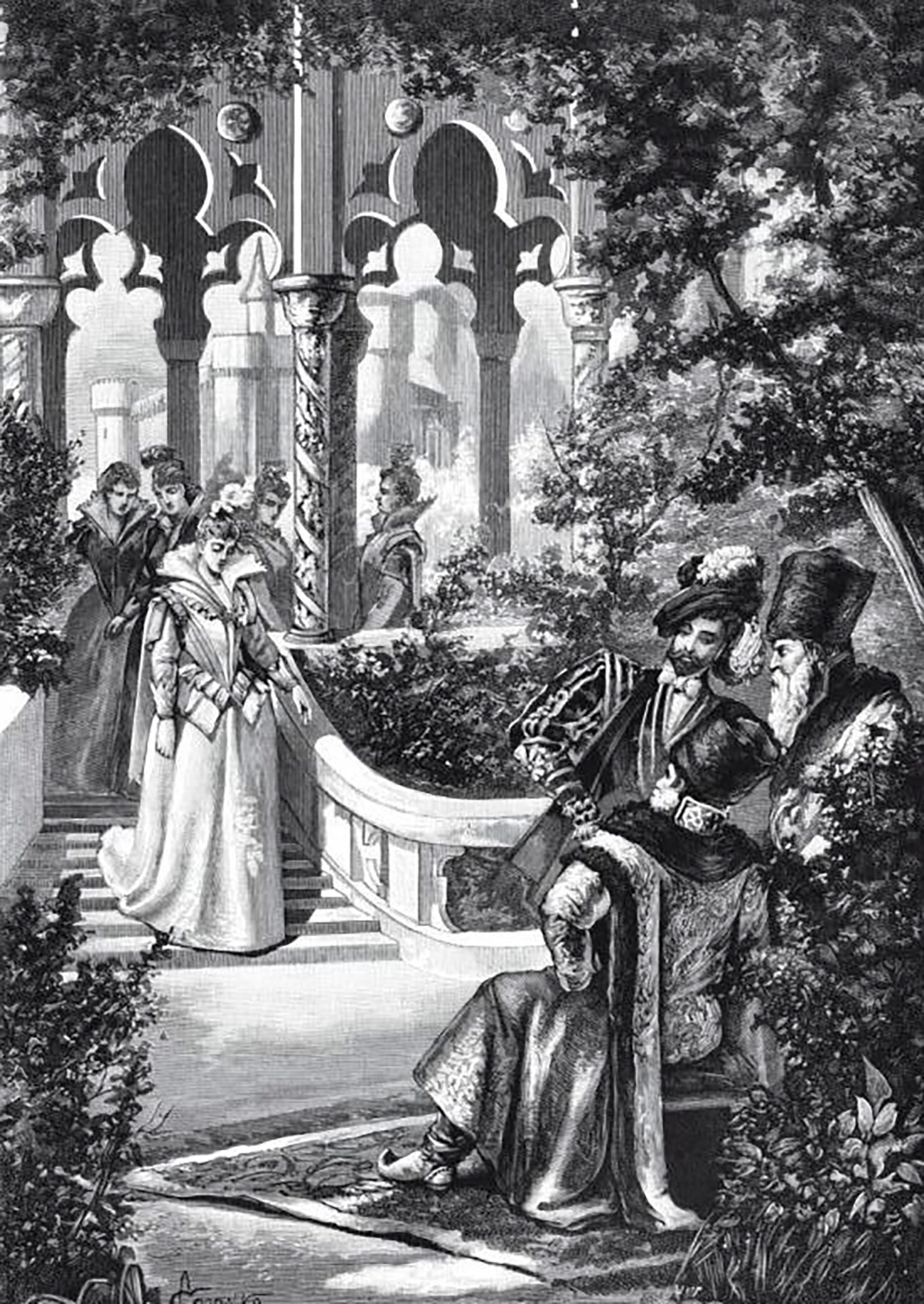
Viewing of the royal bride by the ambassador of Ivan the Terrible in England, an etching after a painting by Sergey Solomko, 19th century.
Public domainHowever, a failed proposal didn’t deter Ivan the Terrible from the idea of intermarrying with the English royal house. In 1582, the tsar sent his envoy Fyodor Pisemsky to Elizabeth I with the task to, first, discuss the terms of a union treaty with England and, second, to negotiate a possible marriage between the tsar and Mary Hastings, Elizabeth I’s distant relative, who in the Tsardom of Muscovy was known as the Princess of Hountinski. Some historians believe that the marriage matters were closely tied to the problem of the signing of the union treaty and practically inseparable from it.
Pisemsky received detailed instructions regarding the sensitive questions Elizabeth I could have had in response to Ivan IV’s proposal. The main problem was, at that time, Ivan the Terrible was married to his sixth (seventh, according to some data) wife Maria and had even managed to become a father during the marriage proposal process. This fact, however, didn’t bother the suitor at all and Pisemsky was instructed to promise that the tsar would get a divorce and that the children from the new marriage, although not inheriting the throne, would receive large holdings.
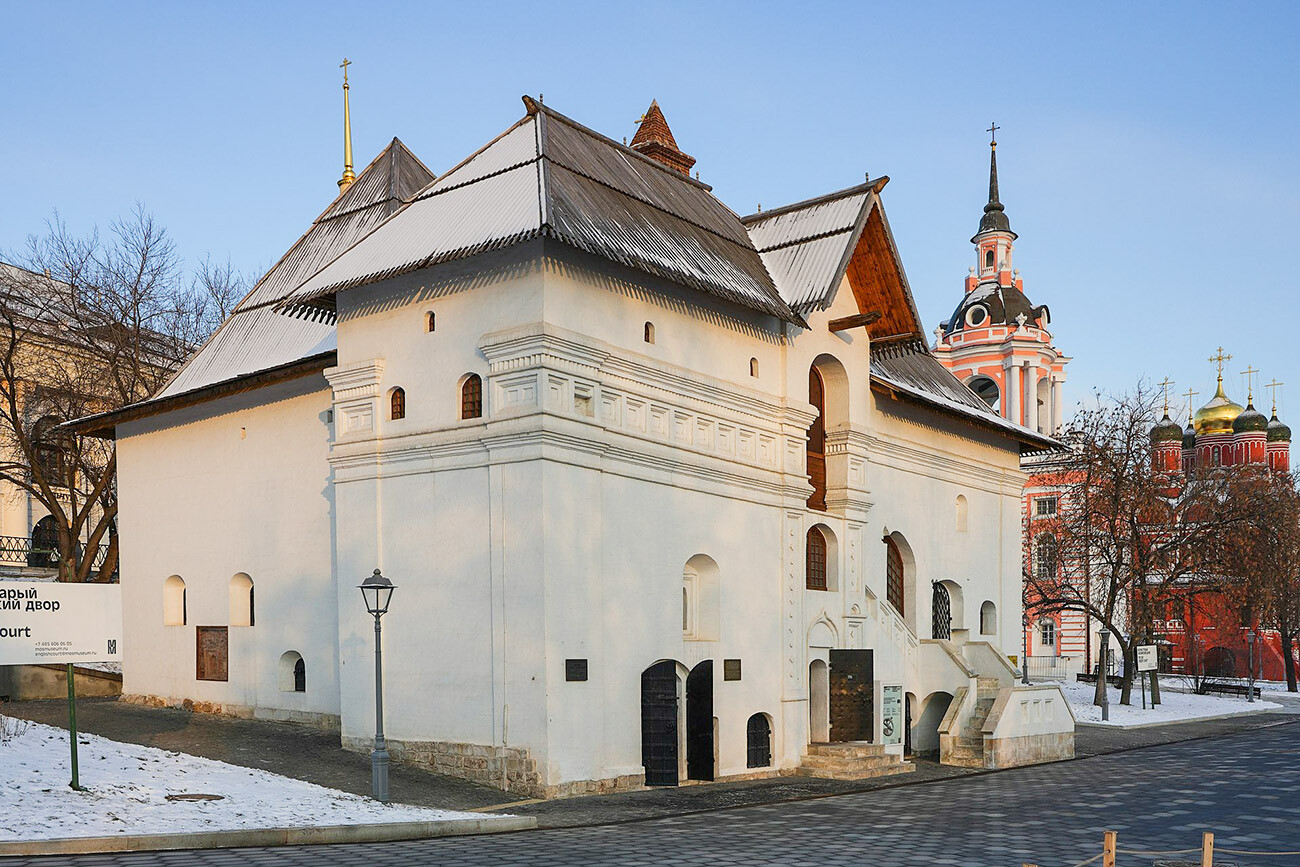
'The Old English Yard,' the house in Varvarka street, Moscow, where English ambassadors and merchants were allowed to reside.
A.SavinThe plague epidemic in London and an apparent unwillingness to proceed with the marriage from the English side led to the whole process dragging on. An English envoy, who arrived at the Tsardom of Muscovy along with Pisemsky, instead of discussing the union treaty conditions, tried to talk the tsar out of the marriage with Mary Hastings. But, even before he could make his final decision, Ivan the Terrible died in 1584.
The story of two failed attempts to intermarry with the English royalty fueled theories of Ivan the Terrible having suffered a violent death. A range of historians, supporting the version of the tsar’s poisoning with arsenic and mercury, believe that Ivan IV’s insistence on marrying an Englishwoman became the catalyst of his demise, since it went against the ambitions of Boris Godunov and his relatives. The tsar’s marriage with a close relative of the English queen could lead to the claim that the offspring of such a marriage had a right to the tsar’s throne – pushing aside Ivan the Terrible’s son, Fyodor Ivanovich, who was married to Godunov’s sister, Irina. It’s speculated that Godunov’s supporters “expedited” Ivan Vasilyevich’s death.
The next chance to intermarry the representatives of the royal houses of Russia and England came only in the 19th century when, despite both families’ struggle against it, the daughter of Russian Emperor Alexander II, Maria, and the second son of Queen Victoria, Prince Alfred, Duke of Edinburgh, were married.
If using any of Russia Beyond's content, partly or in full, always provide an active hyperlink to the original material.
Subscribe
to our newsletter!
Get the week's best stories straight to your inbox